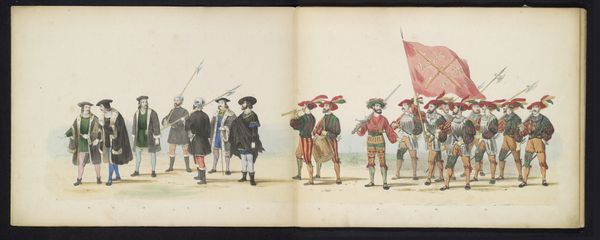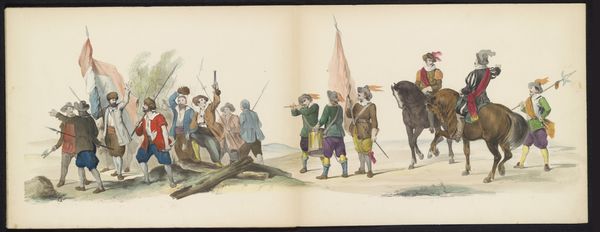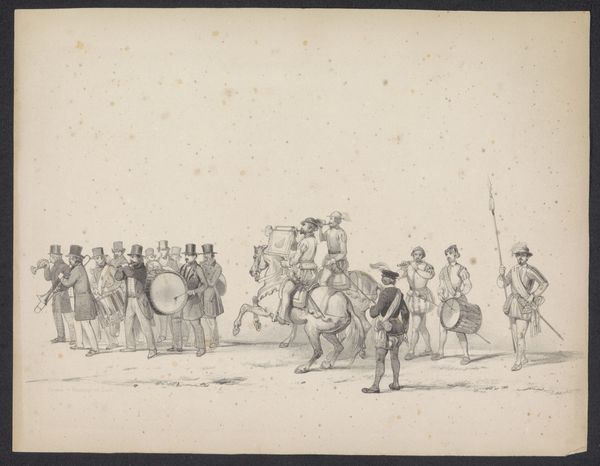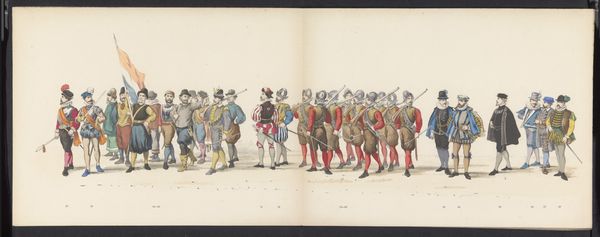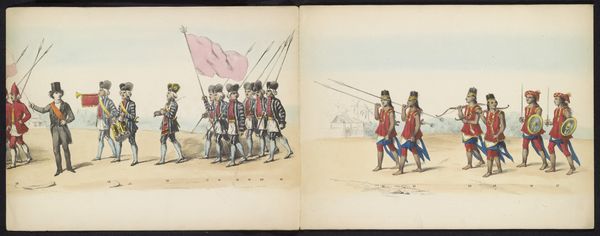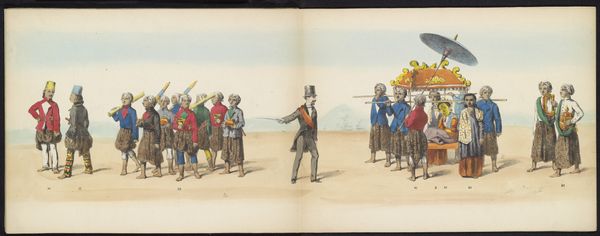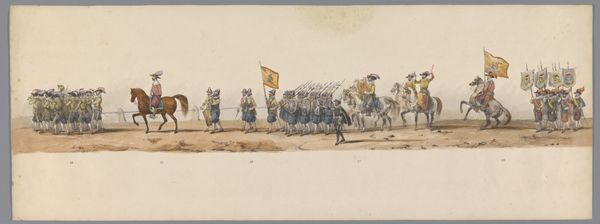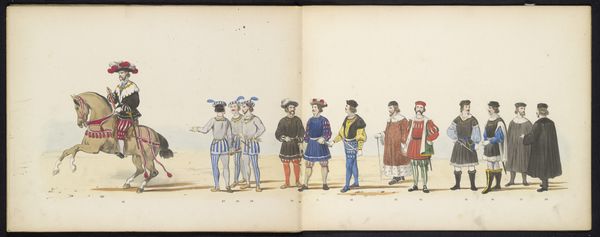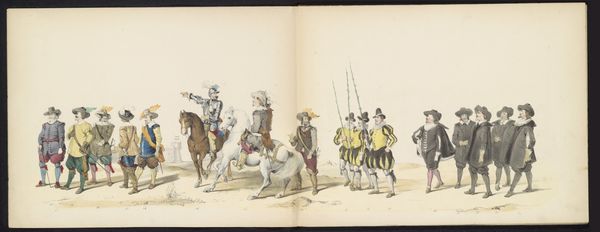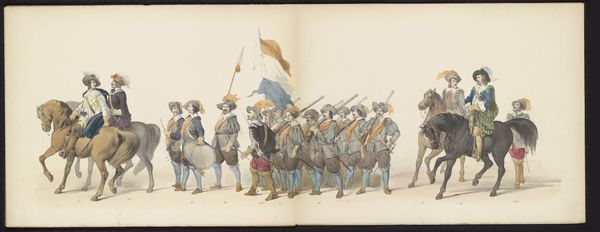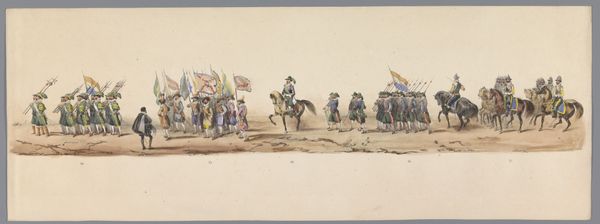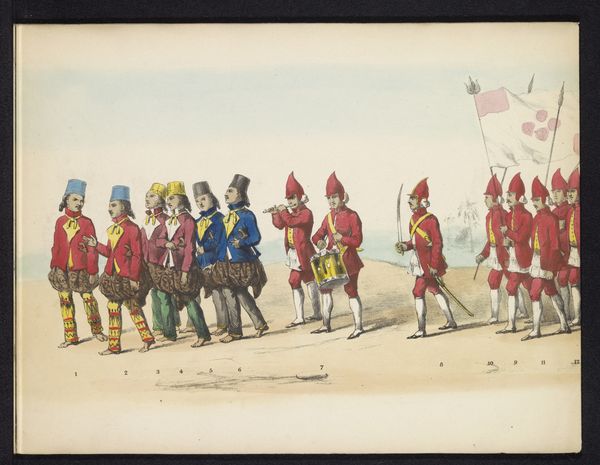
drawing, watercolor, pencil
#
drawing
#
watercolor
#
coloured pencil
#
romanticism
#
pencil
#
watercolour illustration
#
genre-painting
#
watercolor
Dimensions: height 285 mm, width 750 mm
Copyright: Rijks Museum: Open Domain
Curator: Immediately, I'm struck by its theatrical quality. The muted colours, the stylized figures—it’s all very dreamlike, wouldn’t you say? Editor: I find the parade somewhat unsettling, a romanticized procession that feels staged for public consumption. But let's start with some background: this is "Maskerade van de Leidse studenten, 1850 (plaat 11)"—a watercolour and pencil drawing by Carel Christiaan Antony Last. It's currently held in the Rijksmuseum collection. Curator: Last certainly had an eye for detail. Each figure, even within the larger group, carries individual marks, and seems to evoke different traditional social roles. The plumed hats, the archaic clothing – these symbols tell stories of imagined traditions, or perhaps even critiques thereof. What social commentary do you find woven into this masquerade? Editor: Well, beyond the surface theatrics, I think it’s worth asking, what kind of tradition is being performed? What's the social purpose, and who is excluded from this performance of Dutch identity? These masquerades were social tools, statements of class and political allegiance during a time of great political transformation in the Netherlands. I think that the artist’s approach does leave some space to ask questions about the performativity of it all. Curator: I think that, by presenting these figures with such distinct attributes, Last taps into something profoundly human. It evokes this impulse towards self-expression that masquerades capture so beautifully. Editor: But for whom is this self-expression accessible? It reflects the ways in which rituals are frequently used to create or contest political power. It presents a complex negotiation of identity and social structure during the 19th Century. I think this genre-scene aesthetic complicates the dynamics of social belonging and difference that remain important today. Curator: The beauty is undeniable though, even within these complex contextual layers you're revealing. The artist has, in his artful interpretation of what are perhaps political assertions, created something compelling to gaze upon! Editor: Indeed, these layers prompt ongoing investigation into what masquerades symbolize, historically, and now. A perfect way to both see and question social practice!
Comments
No comments
Be the first to comment and join the conversation on the ultimate creative platform.
